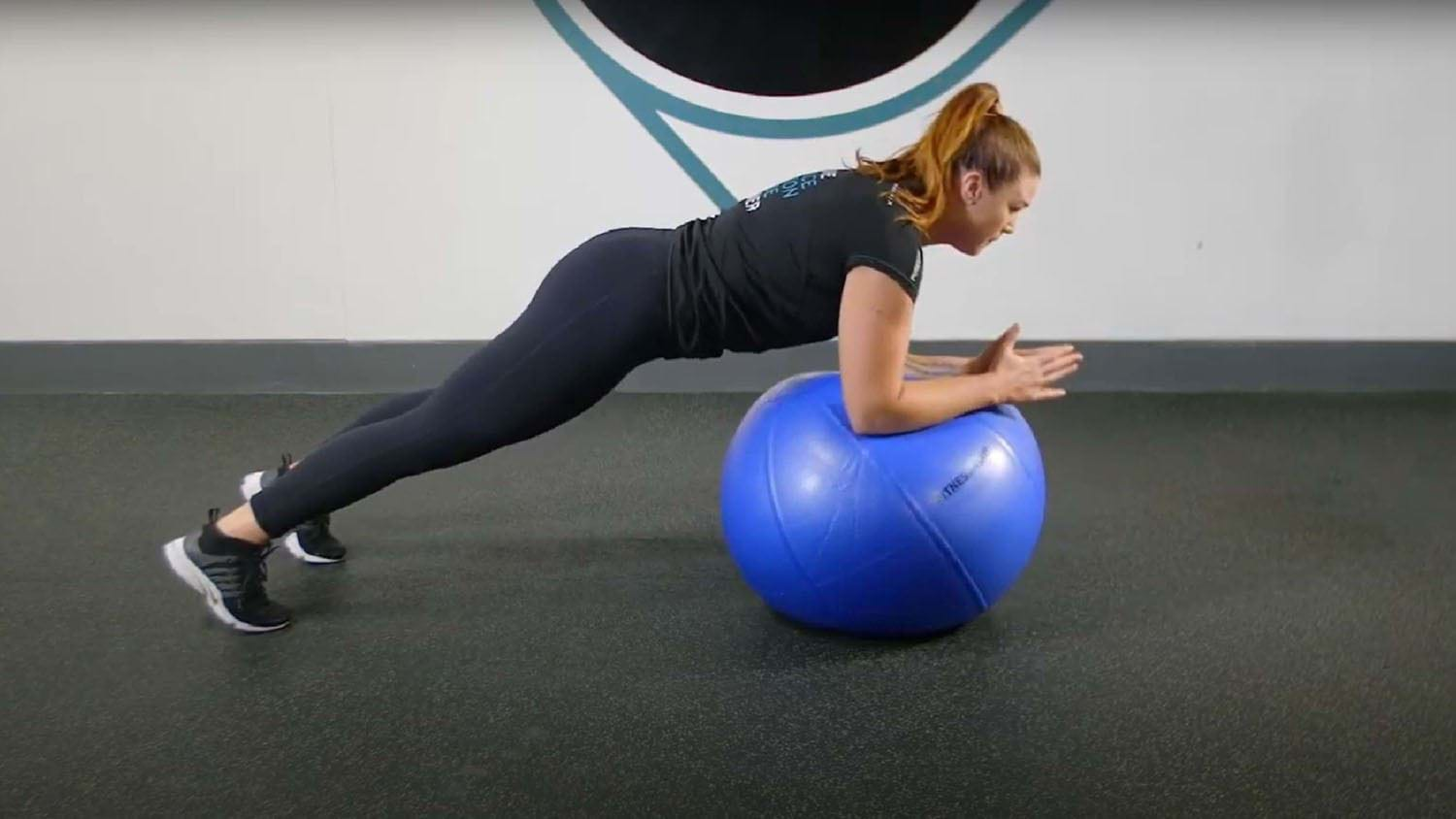Swiss Ball Circles
What Are Swiss Ball Circles?

Swiss balls are a versatile but underrated piece of kit that can level up multiple exercises to add instability and challenge the core.
The Swiss ball circle, also known as a stability ball circle, is a variation of the plank that requires the performer to roll the Swiss ball with control while maintaining a plank position. The Swiss ball provides an unstable surface which means the core has to work harder to keep a strong alignment and avoid losing balance.
Swiss ball circles primarily target the rectus abdominis, transverse abdominis and obliques, with the erector spinae, hips, and shoulders also working hard to keep the body stable.
Check out some of our other ab exercises: Decline sit ups, Ab wheel rollouts, Planks, Sit ups, Crunches
Most Commonly Asked Questions About Swiss Ball Circles
Swiss ball circles are an effective way to improve core strength and stability as well as overall balance and coordination.
Make sure the core is engaged and the body remains stable and aligned to get the most out of this movement!
Swiss ball circles strengthen almost the entire core, however the muscles primarily targeted are the rectus abdominis, transverse abdominis and obliques.
Aim for a rep range that is challenging but allows for good form – around 8-20 reps should be enough to challenge your endurance and stability. If you’re unable to perform conventional Swiss circles, you can do these on your knees.
Tips for Swiss Ball Circles
While the Swiss ball circle is a challenging movement, it’s important to ensure it is performed correctly to avoid injury. A common mistake with this exercise is allowing the lumbar spine to hyperextend as doing this transfers the load from the core to the lower back, reducing the effectiveness of the exercise and exposing the lower back to injury risks.
To engage the core effectively and avoid lumbar spine hyperextension think about tensing your core by pulling your stomach in and thinking about pulling your belly button towards your sternum. As you begin to tire throughout the reps, it’s likely you’ll start to lose core engagement, and this is when you should stop your reps and rest before your next set.
If you find Swiss ball circles too challenging or are struggling to engage your core correctly, regress the movement by adopting a kneeling position instead of balancing on your toes. This will help you to keep your balance and will take the pressure off your lower back and shoulders.
How To Do Swiss Ball Circles
Adopt the starting position by resting your forearms on the Swiss ball and stretching your legs out to balance on your toes. This should look like a plank position.
Engage your core by pulling your belly button towards your sternum.
Commence the reps by using your elbows to roll the ball in a circular clockwise motion before rolling the ball in an anticlockwise motion.
Once you have completed all your reps kneel down before removing your forearms from the Swiss ball.
How to do kneeling Swiss ball circles
Adopt the starting position by resting your forearms on the Swiss ball and balancing on your knees. This should look like a kneeling plank position.
Engage your core by pulling your belly button towards your sternum.
Commence the reps by using your elbows to roll the ball in a circular clockwise motion before rolling the ball in an anticlockwise motion.
If you’re not sure if any of the above exercises are suitable for you, please consult your doctor before you start it. Need guidance on how to perform the exercise? Ask a personal trainer at your gym.